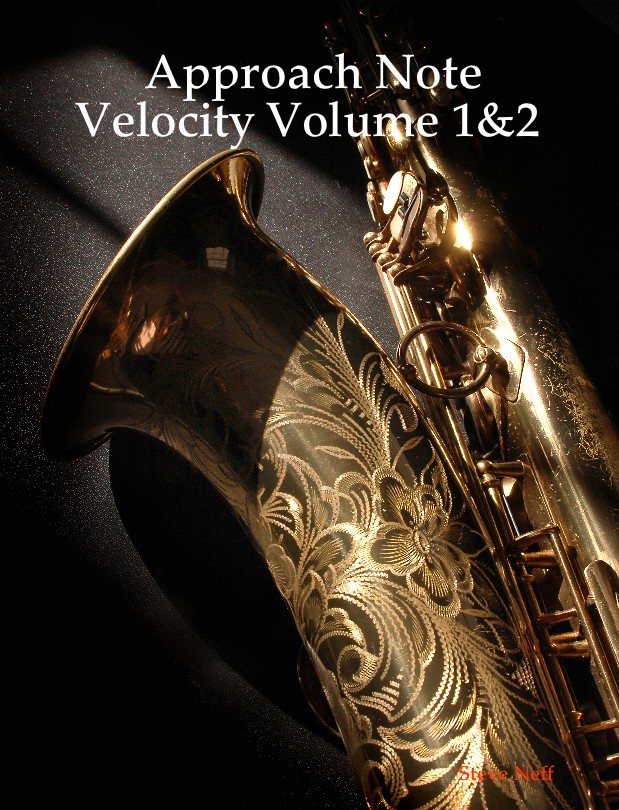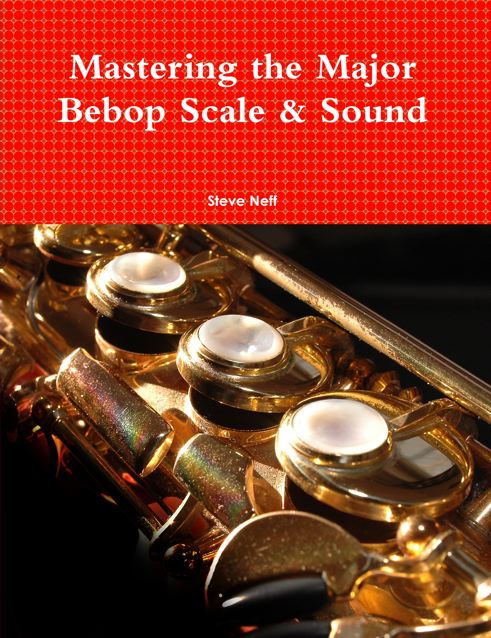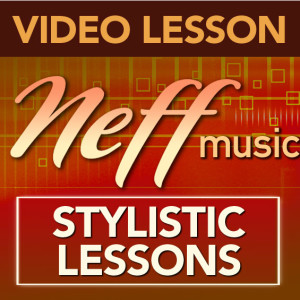“Approach Note Velocity” by Steve Neff
Approach Note Velocity is a book that I created for myself so that I could master all the different approach notes in every key. I have divided the book up into sections by key and have written out the exercises so that you can practice them and read them if you need to. I added the word velocity to the title because as I practiced these approaches I found that I could play faster and faster over chord changes. Below is the intro to the book and a little more detail into it’s genesis and creation.
A number of years ago, I was frustrated with my jazz improvisation over static major and minor grooves. It seemed like I always ran out of ideas and the ideas I had were stale and unoriginal. At that time, although I could play in all keys, more often than not I was held back to the same old diatonic patterns and licks I had studied as a kid. Besides this frustration, I felt like there were many keys with which I just wasn’t comfortable. As a solution, I decided to come up with a comprehensive method (Approach Note Velocity) using approach notes that I could use to systematically solve these perceived weaknesses in my playing. I started by writing out every approach I could think of in every key. For about 4-5 months, I worked on these approaches while playing along to Jamey Aebersold’s Volume 24 “Major and Minor” CD. As I worked on, and added to, my collection of approaches, I saw the positive results in my performances. Not only was I able to play faster over tunes, but I was feeling a confidence that I could start an idea on any note and find a way to resolve it and make it sound good. As I worked on them in depth, I began to notice that my confidence in every key was improving. Also, the method I was using was helping my ear to more easily hear key centers, and something cool was happening to my time concept. I was starting to play ideas in odd meters against 4. I wasn’t tied down to the 1,2,3,4 groove, but was playing across the bar lines while improvising. I really believe that working on “Approach Note Velocity” has helped my playing immensely. I hope that you get as much out of these exercises as I have and that they will improve your improvisation also..
To get the most out of these exercises, I highly recommend that you practice them the way I did. I bought Jamey Aebersold’s Volume 24 “Major and Minor”. I would practice every exercise while playing the background track in that key. Some of the approach note patterns can sound a bit dissonant on their own, but when playing them with a background track you can really hear the approach notes and their resolutions. You can also easily hear when you make a mistake.
Although many of the exercises are written in different time signatures, it makes no difference in regard to playing them over a 4/4 groove. If anything, it varies your phrasing so you’re playing 3 against 4 or 5 against 4. The tempo and rhythm isn’t all that important either. I found that these patterns were great when playing quarter notes, eighth notes or as a variety of triplets or sixteenth notes. As I practiced them, I would speed up and slow down where I wanted, and this created a certain freedom of time for me that was liberating musically. Although most of the approach note patterns are written in eighth notes; don’t feel you need to be held to that rhythm. When I practiced them I would start with quarter notes then move to quarter note triplets. Once I felt comfortable, I would go to eighth notes, then triplets,sixteenth notes…… My goal was to master the approaches, but also come up with new and fresh rhythmic ideas. I also had a lot of fun looping the approach note patterns. If a pattern is in 3 and you loop it over and over, it resolves on different parts of a 4/4 beat. Let your ear and imagination guide you as you play through these.
I would also like to add that I received the most benefit from these when I was systematic and thorough. I spent about 4-5 months working on these patterns in every key; usually about 1-3 hours a day. When I felt I had really mastered a pattern in one key, I would put a check mark next to the exercise and move on to the next key or approach note pattern.
Note that near the end of the book, I’ve included some pages for beginning improvisers who still need to learn their major triads. It’s extremely important in studying these exercises that you have a firm grasp on all your major and minor triads in all the keys.
You’ll also notice that in exercises 9-30, the exercises are only 4
measures long and usually written within one octave. I recommend playing these throughout the range of your instrument and if you can even into the altissimo range. Also, it is valuable to play them not only forwards, but also backwards. I would also play them jumping every other measure. So in exercise 10, you would play measure 1, then measure 3, then measure 2, then measure 4 and so on. You would also do the same thing backwards through the exercise. Measure 4, measure 2, measure 3, measure 1 and so on.
The real gold mine in these exercises are the combination’s I’ve written and the ones you come up with yourself. These are what will help your playing sound less like a pattern and more random or improvisational. The ultimate goal is to get to a point where you are creating combination’s on the spot and coming up with new and exciting ways to play these approaches as you improvise. The best feeling is when you are improvising and these approach note lines are flowing and being created by you in a random and unpredictable way. When you can do that you will be amazed at the lines you can create on the spot.
Lately, I have been adding detailed online lessons to my site with step by step instructions on how to master this material. Each online lesson is about half an hour and I assign you homework from the book to work on for that week or until the next lesson. I demonstrate how to work on these concepts and utilize them in real playing situation. You can see a sample video clip of each online lesson to get a feel of what it is like. Just go to the “NeffMusic Lessons” tab of the site and do a search for “Approach Notes” to see all the online lessons available. These are one of the best concepts that I have worked on over the years and I hope you can join me to become the best player you can be.
Thanks, Steve




Leave a Reply